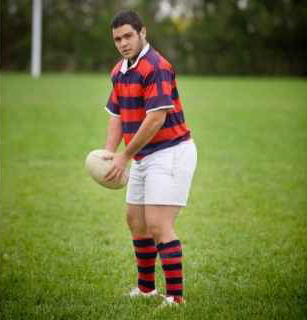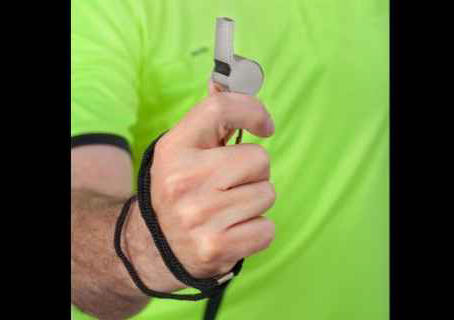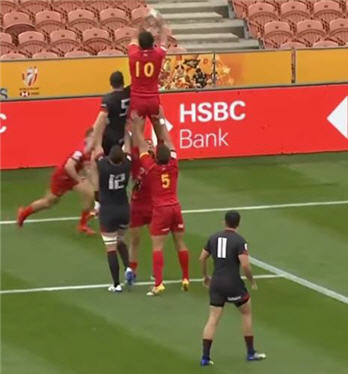So much of the excitement in Sevens comes from wide passes and amazing runs that evade defenders.
It seems that kicking the ball doesn’t play a big part in open play. There is far more hoofing the ball in other versions of rugby.
But that doesn’t mean that players aren’t allowed to kick in Sevens rugby. Let’s run through the main areas when kicking is importing in Sevens:
- kick-offs for restarting play
- the kick-pass
- tap kicks
- kicking for touch
Kick-Offs To Start And Restart Play

At the very start of a match, you will see a player from one team standing on the halfway line and kicking the ball high.
This is known as the kick-off. A sevens match is also restarted with a kick-off after a score. A player from the scoring team takes the kick-off from the halfway line.
Because kick-offs happen after a score, there tend to be several per half. So, kick-offs must be a big part of a team’s strategy. In general, teams aim for one of these tactics:
- Kick the ball long to make the opposition play deep in their own half
- Kick the ball high so that your teammates can chase and compete to catch it
- Kick long and wide to put the ball into touch over the side-line
Kicking to catch the ball
One of the most exciting sights is when a player sprints down the pitch and out-jumps the defenders to catch the ball.
Here is a clip of the US Sevens team using this strategy, which works so well that the Eagles score an outstanding try.
Rules about how the ball is kicked
There is a strict rule that the rugby ball must hit the ground before the ball is kicked. In other words, it’s a type of a drop-kick.
It takes a lot more skill and practice to drop-kick the ball accurately than just punting it. This is why it’s usually the same small number of players in a sevens squad who kick the restart.
This is often the role of the outhalf in sevens.
The Kick Pass In Sevens
There is a general belief in Sevens that you shouldn’t kick the ball in open play because you’re simply giving away possession. With so much space on the field, there is a greater opportunity of scoring through running and passing.
The exception is the kick pass, which can be used to devastating effect. This is when a player kicks the ball in open play either long or across the field and a teammate catches it.
The most effective kick pass drops to chest-height for an onrushing player who doesn’t need to slow down to catch it. Now you’re talking try-time!
At international level, Argentina is renowned for kick passing. It seems that their players grew up playing soccer as well as rugby and are more comfortable than other nations with kicking accurately.
Tap Kicks From Penalties In Sevens

When a penalty is awarded, players have the option to get play going quickly with a tap kick.
The team awarded the penalty can’t just start running with the ball. One player is obliged to take hold of the ball, place it on the ground, and tap it with their foot.
This is done so quickly that it may seem that they just bent down and picked it up. But referees will whistle for an infringement if they don’t see the tap.
This is a skill that must be practiced. Otherwise, the tap taker may fumble the ball while picking it up and give away a knock-on. That brings a groan from watching supporters and plenty of laughter from the opposing fans!
You rarely see a fumble at international level. But it crops up a bit more at club level when a player is simply not concentrating.
Kicking For Touch From Penalties In Sevens

You probably know that teams have the option of kicking for goal from penalties. In sevens, kickers can’t use a tee to prop up the ball. The penalties must be taken as a drop-goal.
But what if the penalty is too far away or at too difficult an angle for a successful kick at goal?
Many teams opt for the tap kick that we described in the previous section.
But some teams, like Ireland, prefer to kick penalties from touch instead of taking tap kicks. The team who kicks the ball across the sideline from a penalty get to throw the ball into a lineout.
Most of Ireland’s male Sevens players would have played Fifteens rugby in their schooldays. It seems that they are more comfortable than other teams about jumping and winning their lineouts to launch an attack play.